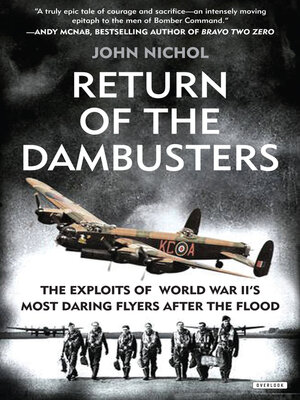Return of the Dambusters
ebook ∣ The Exploits of World War II's Most Daring Flyers After the Flood
By John Nichol

Sign up to save your library
With an OverDrive account, you can save your favorite libraries for at-a-glance information about availability. Find out more about OverDrive accounts.
Find this title in Libby, the library reading app by OverDrive.



Search for a digital library with this title
Title found at these libraries:
| Library Name | Distance |
|---|---|
| Loading... |
A history of the RAF’s 617 Squadron during World War II, from bombing Nazi battleships to attempts on the lives of Hitler & Mussolini, and more.
The Dambusters had another nickname—they were the “Suicide Squadron,” and these daring flyers were the go-to forces for dangerous precision attacks. They dropped the largest bombs ever built on Hitler’s prize battleship, Tirpitz, as well as rocket sites and secret weapon establishments; they were involved in attempts on the lives of enemy leaders, including Hitler and Mussolini; and they created a false fleet on D-Day, which fooled the Germans, among other crucial missions. but they also suffered brutal losses, with seventy-five percent of 617 Squadron killed in action by the end of the war.
In this awe-inspiring book, John Nichol—himself a former RAF flight lieutenant—retraces the path of 617 Squadron’s most dangerous sorties, the ones largely lost to history. With the sensitivity of a fellow soldier, Nichol gains unprecedented access to the surviving Dambusters, whose moving personal stories add depth to this impressively researched history. The result is a tense, poignant story of courage by men who braved death time and time again in the name of freedom.
Praise for Return of the Dambusters
“A truly epic tale of courage and sacrifice—an intensely moving epitaph to the men of Bomber Command.” —Andy McNab, bestselling author of Bravo Two Zero
“A straightforward account considers all sides to these precise missions.” —Kirkus Reviews
“This is both an exciting book and a saddening one . . . a tale of victory, in the end, magnificently told in lip-biting detail.” —The Daily Mail (UK)
“Drawing on interviews with survivors, as well as archive material . . . the book is [a] story of human suffering in the air and on the ground.” —The Times (UK)</







